Utah is one of the top hiking tops in the United States, with wildly diverse landscapes; varying from mountains, deserts, forests and canyons.
The countless miles of hiking trails give you the opportunity to see some of nature’s most stunning monuments such as Delicate Arch, the Bryce Canyon Amphitheater or the magnificent slot canyons in Zion National Park.
I’ve compiled a list of the best hiking trails in Utah. These trails offer hikers the opportunity to explore the diverse landscape through trails of varying difficulty.
Utah’s Best Hikes
Angel’s Landing Hike
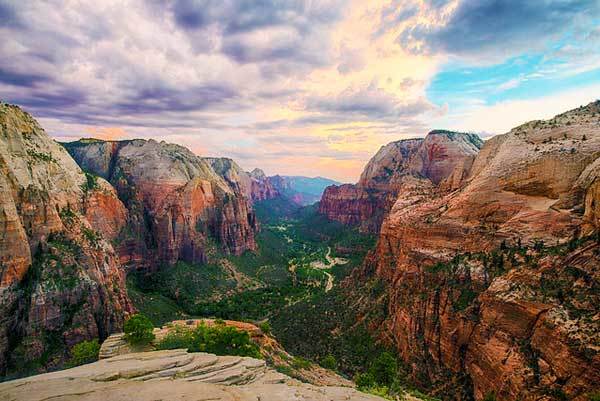
Angel’s Landing is without a doubt the most famous and popular day hike in the Zion National Park, despite its difficulty.
The iconic hiking trail is a 5-mile round-trip consisting of huge drop-offs and narrow edges and it certainly is not for everyone.
The cardio-inducing grind takes you up a series of human engineered switchbacks known as Walter’s Wiggles.
The trail leads across the ridge of a narrow fin with sheer cliff walls on either side and chains serving as hand rails, rather than a protective barrier. Although the trail is perfectly safe, but not recommended for those who have a fear of heights.
The trail offers outstanding views along the entire way, but the view from the lookout at Angel’s Landing is the pinnacle, with a 360-degree panoramic view of Zion National Park.
Almost half of the trail is a steep uphill climb with plenty of switchbacks, so you can expect it to be quite strenuous and it weaves its way on the edge of the mountain at times which can be quite intimidating.
Despite the heights and difficulty, the Angel’s Landing hike is still one of the most popular, so it is suggested that you hike in the early morning or mid-afternoon to avoid the crowds and the hot midday sun.
No permits are required for this hike.
Delicate Arch Hike
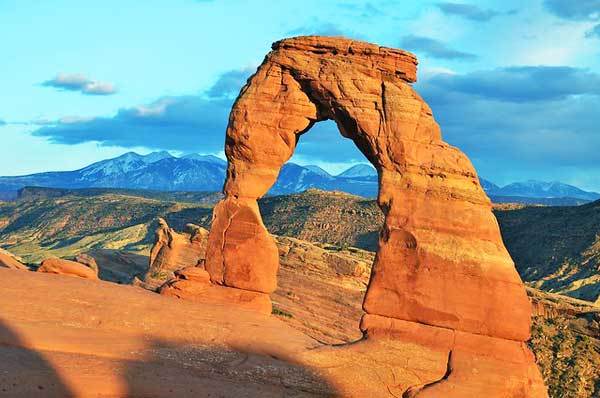
Delicate Arch, located in Arches National Park, is probably Utah’s most famous natural arch, it’s even featured on the state’s license plates. This outstanding natural monument can be reached via a relatively easy 3-mile round-trip hike.
The beginning of the trail can be pretty strenuous but is pretty doable with the right footwear.
The final stretch traverses the face of a small slickrock cliff before you suddenly emerge on the rim of an amphitheater of solid rock, looking cross the broad bowl at Delicate Arch with the La Sal Mountains visible through the arch’s keyhole.
The route, which has a minimal elevation is in full sun for almost the entire way, so bring sunblock.
The hike is best done before sunrise or sunset. If going at sunrise make sure you get an early start and give yourself an hour and a half to hike to the arch, so you arrive before the sun rises, same goes for sunset.
If you choose to hike to the arch in time for sunset, make sure you bring a headtorch, so you are able to navigate your way back in the dark.
Bring water and a snack to enjoy once you reach the iconic Delicate Arch. This hike is well and truly a memorable experience
Adults pay a $10 fee, and children under 15 hike for free.
Fairyland Loop Hike
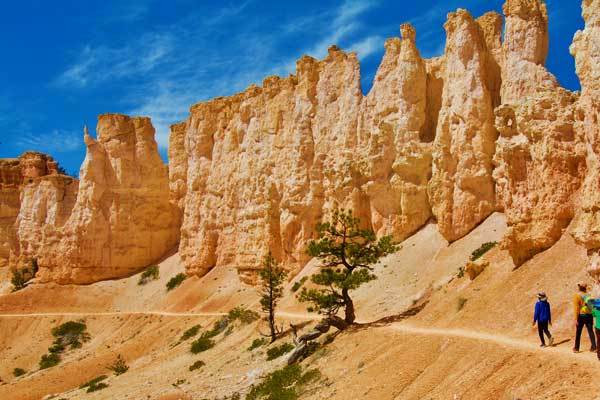
Fairyland Loop, located in Bryce Canyon National Park, is yet another spectacular hike.
The 8-mile hike follows ridges and canyons as it winds through the myriad of towering and colorful hoodoos that make the park famous. Some of the highlights of this hike include the colorful China Wall and if you choose to add on a spur to
Tower Bridge, which is another dramatic rock formation that resembles a huge castle gate.
The trail is incredibly well-maintained and not very crowded, making it perfect for the whole family. It offers incredible scenery along the way and the experience can sometimes feel other worldly.
The route can be challenging as it takes you up different elevations, but your surroundings definitely make every step along the way worth it.
The best times to hike are spring, early summer and autumn. Make sure to carry plenty of water and snacks to keep you fuelled throughout the hike.
Queen’s Garden/Navajo Loop Trail
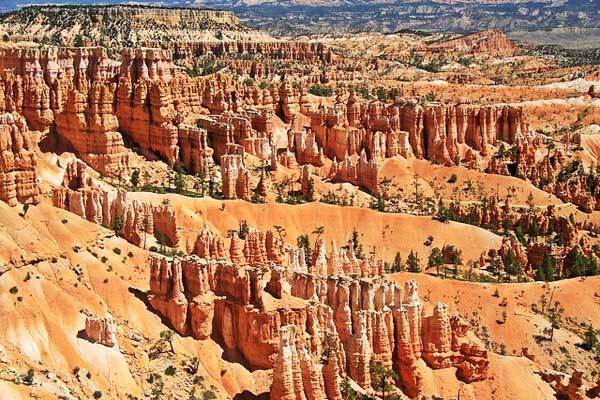
The Queen’s Garden/Navajo Loop Trail is a shorter alternative to the Fairyland Loop with much of the same scenery, although it is more crowded.
This hike is one of the most popular hikes in the Bryce Canyon National Park.
It descends from one of the park’s most scenic lookouts, Sunrise Point, and into the main highlight, the Bryce Canyon Amphitheater. The 2.9-mile loop trail follows a hard-packed path running along winding hill crests at the base of towering hoodoos, to the canyon floor and then back up.
The beginning of the trail is quite hard as it is all uphill switchbacks but then it evens out a bit as you stroll through desert land.
If you want to avoid the grind up the switchbacks and opt for a shorter hike, the Queen’s Garden Trail is a shorter and easier out-and-back hike that takes in some of the main features of the loop trail.
The trail is known for its colorful hoodoos of orange, cream and pink as well as its sweeping mountain views.
The Narrows Hike
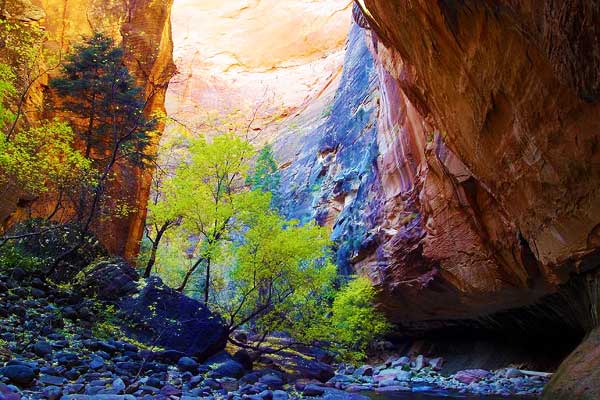
The Narrows, located in Zion National Park, is one of the park’s most outstanding hiking trails. Zion National Park is famous for its slot canyons, with The Narrows being a great way to experience one of these canyons.
The route takes you on a wet trek up the Virgin River and leads through The Narrows, the park’s signature feature. Walk along the river, up the canyon, which in some areas is so narrow it does not have any dry banks.
The twisting and turning canyons walls extend up from the river dramatically, often obscuring your view of the sky, it truly is a unique experience.
Most hikers make the trail between a 6 and 8-mile roundtrip, but with a permit, it is also possible to do a 16-mile hike from the top down. However, permits are limited, and this 16-mile hike is no easy task.
Since it is a river hike, it is seasonal, opening after the water levels moderate following the spring run-off.
This unusual hike offers incredibly dramatic scenery. With the canyon being only a few meters wide in some sections, you will get wet, so make sure you wear the appropriate shoes.
Due to the nature of the hike, you may end up wading through the water for a great deal of the hike, so it is important that you have a medium fitness level.
More USA hiking articles by State:
- Washington hikes
- SoCal hikes
- Alaska hikes
- Colorado hikes
- Florida hikes
- Georgia hikes
- New Mexico hikes
- Virginia hikes
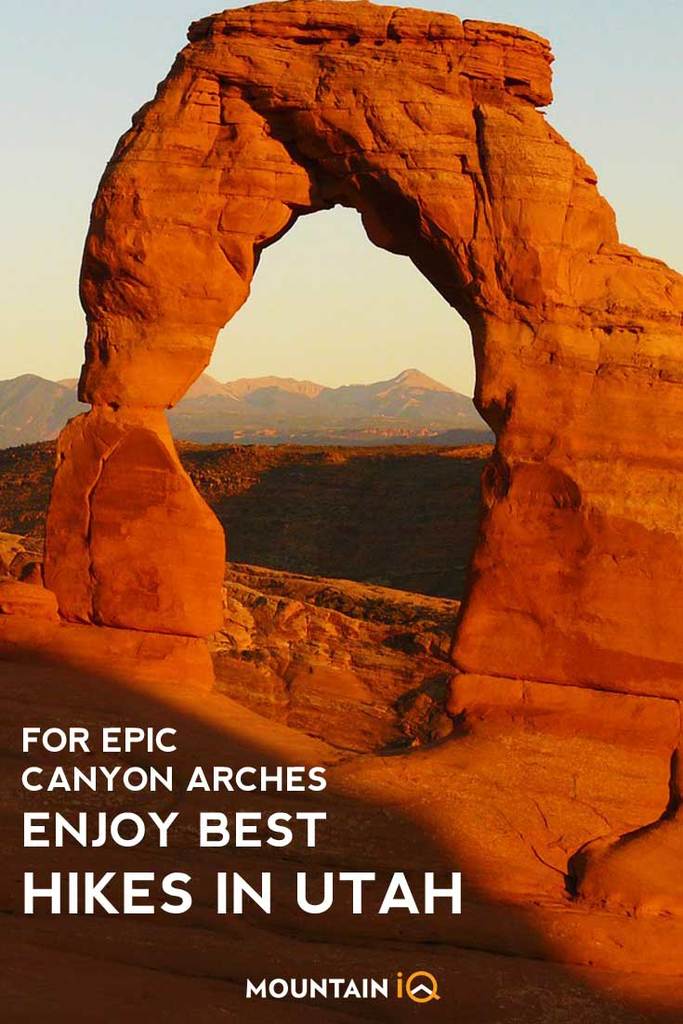

I’m surprised at least one of the many Utah peaks weren’t on the list—Mt. Timpanogos, Mt. Nebo, Lone Peak, King’s Peak, etc.
Timpanogos and Nebo can be done in a day. And King’s Peak is an excellent 2-3 day hike (one day to base camp, one day to summit and return to base, and then another day to return from base camp).
Hi Kay, Thanks for the suggestions, we’ll get this added to the article soon.